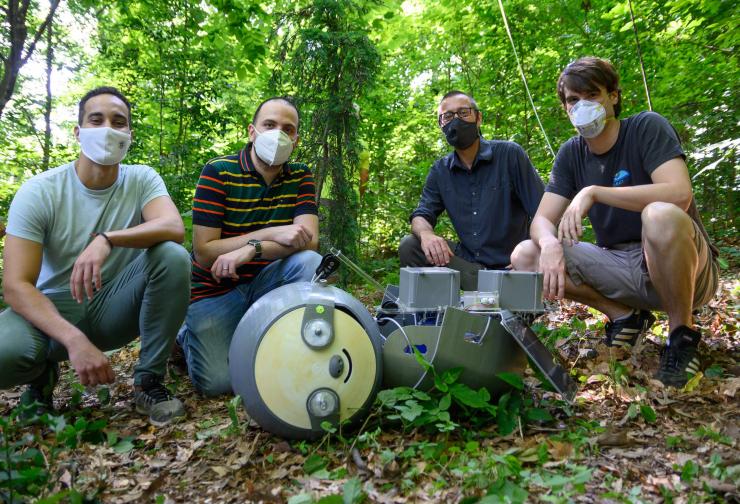SlothBot is a slow-moving, solar-powered robot built by robotics engineers to take advantage of the low-energy lifestyle of real sloths. It moves along a cable strung between two large trees, as it monitors temperature, weather, carbon dioxide levels, and other information.
For the next several months, SlothBot will be hanging out in the Atlanta Botanical Garden’s 30-acre (12-hectare) midtown forest. That’s where the new high-tech tool is being tested for use in the battle to save some of the world’s most endangered species.
SlothBot demonstrates how being slow can be ideal for certain applications. Georgia Institute of Technology roboticist Magnus Egerstedt led the team. He said in a statement:
SlothBot embraces slowness as a design principle. That’s not how robots are typically designed today, but being slow and hyper-energy efficient will allow SlothBot to linger in the environment to observe things we can only see by being present continuously for months, or even years.

SlothBot is about 3 feet (1 meter) long, with a whimsical 3D-printed shell that protects its motors, gearing, batteries, and sensing equipment from the weather. The robot is programmed to move only when necessary, and will locate sunlight when its batteries need recharging. At the Atlanta Botanical Garden, SlothBot will operate on a single 100-foot cable, but in larger environmental applications, it will be able to switch from cable to cable to cover more territory.
SlothBot could help scientists better understand the non-living chemical and physical parts of the environment, providing a new tool to better understand how to protect rare species and endangered ecosystems. Emily Coffey is vice president for conservation and research at the Atlanta Botanical Garden. She said in a statement:
"SlothBot could do some of our research remotely and help us understand what’s happening with pollinators, interactions between plants and animals, and other phenomena that are difficult to observe otherwise."
Egerstedt said inspiration for the robot came from a visit he made to a vineyard in Costa Rica where he saw two-toed sloths creeping along overhead wires in their search for food in the tree canopy.
It turns out that they were strategically slow, which is what we need if we want to deploy robots for long periods of time.

A few other robotic systems have already demonstrated the value of slowness. Among the best known are the Mars Exploration Rovers that gathered information on the red planet for more than a dozen years. Egerstedt said:
Speed wasn’t really all that important to the Mars Rovers. But they learned a lot during their leisurely exploration of the planet.
After testing in the Atlanta Botanical Garden, the researchers hope to move SlothBot to South America to observe orchid pollination or the lives of endangered frogs. Egerstedt said:
It’s really fascinating to think about robots becoming part of the environment, a member of an ecosystem. While we’re not building an anatomical replica of the living sloth, we believe our robot can be integrated to be part of the ecosystem it’s observing like a real sloth.
Bottom line: SlothBot is a solar-powered robot designed to mimic the slow movements of a sloth.

